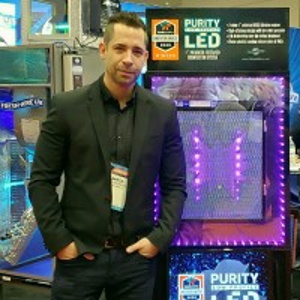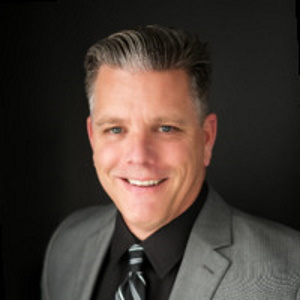Residential ultraviolet duct disinfection systems arrived on the market about 1995. These are the standard ‘UV stick lights’ that most contractors are familiar with.
They operate on the 253.7-nanometer germicidal C-band wavelength and are very effective for destroying germ carrying microbes and bacteria in the ductwork. “Everyone’s using UV-C. It’s a very effective wavelength for disinfection,” noted Aaron Engel, vice president, business development for Fresh Aire UV Canada, Montreal.
Offering a proven solution
Products at the low end of the spectrum tend to be ‘bare bones’ models with few features
“Over the past ten years, advances in ease of installation and safety have continued to increase the viability of UV-C (in multiple applications),” added Daniel Jones, president and co-founder of UV Resources, Santa Clara, California. FEP (fluorinated ethylene propylene) coated lamps offer protection from breakage and better fixtures allow 360-degree irradiance and easier installation, noted Jones.
And the price has come down considerably. Not surprisingly, products at the low end of the spectrum tend to be ‘bare bones’ models with few features. “For most contractors the UV light tends to be a pretty challenging sell without the homeowner understanding the benefits,” noted Greg Butt, executive director for Emerson Commercial and Residential Solutions (formerly White Rodgers), Richmond Hill, Ontario. But where the homeowner is experiencing indoor air quality (IAQ) issues, UV offers a proven solution.
Photo catalytic oxidation
The second commonly used ultraviolet technology is UVV, which operates on a 187-nanometer wavelength and destroys odors and chemicals – VOCs, or volatile organic compounds. “It’s very effective,” noted Jocelyn Dame, president, Sanuvox Technologies Inc., Montreal. Many two-lamp systems consist of a UVC and UVV lamp – in fact Sanuvox puts both into the same lamp – to control both biological contaminants and VOCs. UVV lamps produce ozone.
However, the amounts are small, typically about .03 ppm when measured 10 feet from the lamp and well within the U.S. Environmental Protection Agency (EPA) maximum safe ozone level of .05 ppm. The newest UV technology is photo catalytic oxidation (PCO). Basically, it works by shining UV light on a titanium substrate – a grid or a cartridge – causing a catalytic reaction that destroys chemicals and odors.
Downstream of the evaporator coil
The UV reacting with the titanium breaks up VOCs into carbon dioxide and water
Fresh Aire UV’s APCO (advanced photo catalytic oxidation) system, for example, is a non-ozone producing system that uses UVC light that reacts with activated carbon impregnated with titanium to adsorb odors and sterilize the air and coil.
Activated carbon can only adsorb so much before it becomes saturated. However, the UV reacting with the titanium breaks up VOCs into carbon dioxide and water, so they are safely released from the carbon. The carbon is, in effect, constantly regenerating itself, explained Engel. A UV lamp can be installed almost anywhere in the ductwork. However, most manufacturers suggest placing it either downstream of the evaporator coil or in the return duct, where air movement is slowest. The critical factors are UV light density and dwell time – how long the contaminants are exposed to UV.
Breeding ground for microbial growth
In a coil installation, the lamp is placed perpendicular to the airflow and parallel to the coil. It’s a good location because “It’s wet, it’s cool, it’s dark; it’s the perfect breeding ground for microbial growth,” said Engel. “You can show me what will appear to be a clean and dry coil… and if I did a petrie dish test, a contact test or a culture on it, there would be more often than not microbial growth on that coil.”
“If you install a UV system over that evaporator coil, you will be able to keep it clean, keep it sterile and keep the drain pan clean. As the air moves up through the coil, you are able to address the air quality as the air passes the UV light.”
Compensating for the faster airflow
On a supply side installation, a larger lamp might be used to compensate for the faster airflow
Installing the UV lamp in the return air duct also has a number of things going for it. The air is moving at it’s slowest, which increases dwell time. And if the lamp is installed parallel to the airflow, that maximizes the dwell time and has the side benefit that the lamp remains cleaner because airborne ‘gunk’ is less able to stick to it.
This allows Sanuvox, for example, to recommend that UV-C lamps mounted in this fashion to be replaced only once every three years. “Now we have an air purifier and not just an object purifies,” added Dame. It’s not always possible to install the UV lamps in the most ideal location. On a supply side installation, a larger lamp might be used to compensate for the faster airflow. All manufacturers offer sizing charts that will help. Some also have smartphone apps to assist the technician.
Providing disinfection on both sides
The installing technician must keep in mind that these are ‘line of sight’ devices, so any obstruction between the lamp and the surface to be disinfected will block the irradiation. Often a two-lamp system would be installed over the A-coil to provide disinfection on both sides, noted Butt.
As well, he added, it may seem obvious but the technician needs to be absolutely sure where the coil is located before they cut the hole in the ductwork so that the UV lamp is installed in the optimum position. Easy access to the UV lamps once they are installed is critical, noted Jones. This includes ensuring any switches or wall plugs are readily accessible to turn the system off or service. As well, UV can damage plastic or paper where it does not contain UV inhibitors.
Packaged connected home system
Some manufacturers have added Wi-fi connectivity to certain UV lamp modelsMost plastic drain pans do these days and if there’s no option but to place the lamp near the furnace filter, there are also UV resistant filters. Any exposed wire should be wrapped with metallic tape. Today’s smart controls help the different equipment in the home to work in harmony, maximizing comfort and efficiency. Increasingly, UV systems are being integrated.
Some manufacturers have added Wi-fi connectivity to certain UV lamp models. This allows the homeowner to check things like lamp life on their smart phone. In January, Fresh-Aire UV introduced its AirSmart packaged connected home system at the AHR Expo in Las Vegas. It consists of their APCO UV system, a Foobot indoor air quality monitor (sensor control) and a Lux Wi-fi hermostat. The Foobot continuously monitors the air on many different variables including temperature, humidity, particulate, VOCs, etc.
Significant source of income
Any time there is a spike or issue, it notifies the thermostat, which turns on the furnace fan to ‘clear the air,’ as it were. The homeowner can see exactly what effect activities like cooking, painting or construction materials gassing off have by watching their smartphone. IAQ has been largely subjective in the past; now they have reliable data.
With the homeowner’s permission, the contractor can log into the device to check the IAQ in a customer’s home and adjust the HVAC equipment if needed. The contractor needs to educate the homeowner. While most UV lamps have safety features, “It is wise to warn about detrimental effects of UV-C exposure to the skin and eyes,” noted Jones.
And, of course, homeowners need to know about lamp replacement intervals. Too often, says Dame, the contractor does the initial installation and never comes back. “They are giving up a significant source of income. They should be selling the lamps and sending reminders to their customers when they need to be replaced.”



















